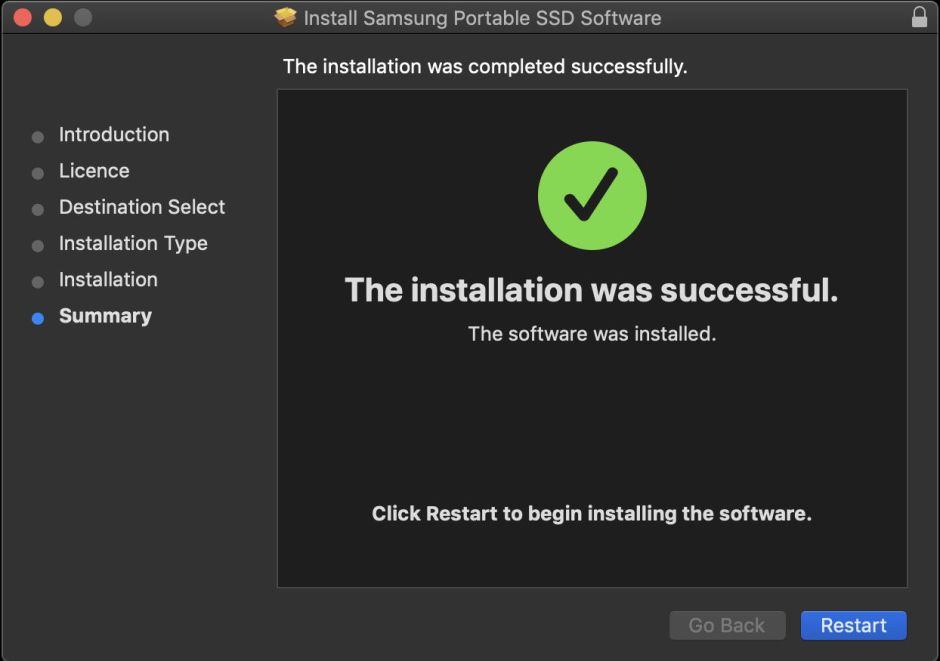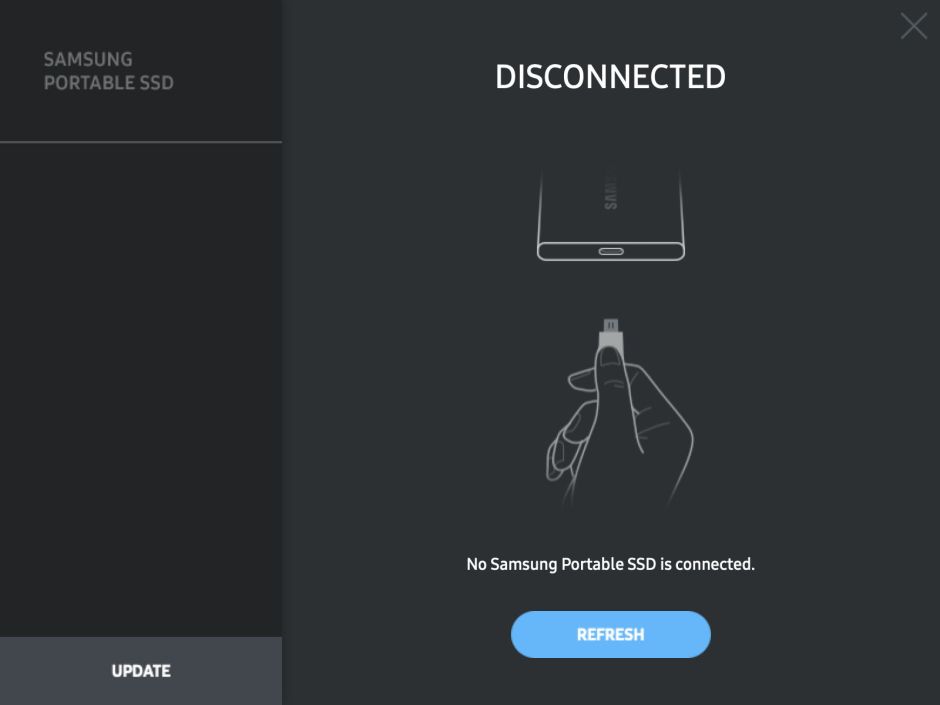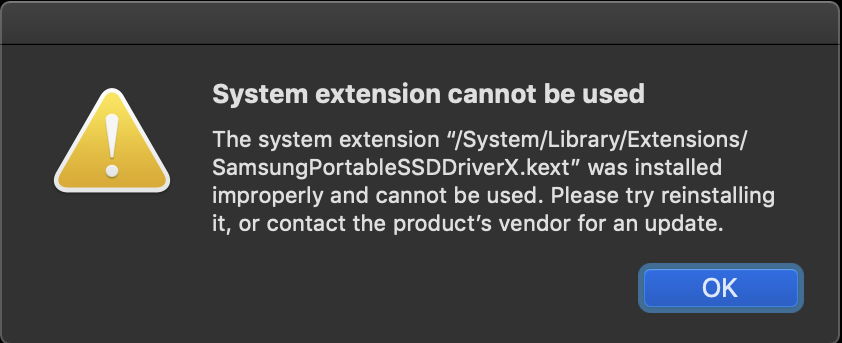The biggest disappointment with Thunderbolt 3 is how few devices can actually make good use of its speed. If your Mac has an Apple-supplied SSD, you should see far superior performance from it than a standard external SSD. That’s because the interface for that SSD is likely to be SATA III, delivering a maximum of 6 Gb/s. But what if you pay more for one of the new NVMe PCIe x4 SSDs, like a Samsung X5? This article looks at what you’re likely to get for your money.
A few manufacturers are now offering these high-speed SSDs, but you’ll pay a premium for them. I’ve got a Samsung X5 500 GB which cost me rather more than I’d expect to pay for a 1 TB ‘slow’ SSD. Currently, you should expect to pay just over £/€/$ 400 for a 1 TB Samsung X5, against just over £/€/$ 150 for a 1 TB T5.
Claimed data transfer rates are “up to 2800 MB/s” for the X5, against “540 MB/s” for the T5, which should be very noticeable indeed.
Tested on my iMac Pro over Thunderbolt 3, the X5 can indeed fly with the wind, although comparison with its T2-controlled internal SSD is interesting. Throughout this article, I will use benchmark transfer rates reported by the current version of Blackmagic Disk Speed Test.

My home-assembled 1 TB SATA-based SSD turns in a steady read performance of around 520 MB/s. The X5 far exceeds that at around 2550, which is slightly faster than even the internal SSD, which delivers 2450.
When writing in cool conditions, the X5 is also superior, although here turning in only about 1955, against the SATA result of 470, and it’s the internal SSD which excels at 2950.

So, if like me you can’t afford to pay Apple’s premium for an internal 4 TB SSD, what could go wrong with reducing the size of your internal SSD and adding capacity with a Samsung X5?
First, the pricing still isn’t that competitive. A 1 TB X5 will cost you just over £/€/$ 400, whilst augmenting the internal 1 TB unit in an iMac Pro to 2 TB is an extra £/€/$ 540 or so. The gap gets wider when you look bring the total capacity to 4 TB, for which Samsung would want around £/€/$ 1250, and Apple an extra £/€/$ 2160. But there’s an extra that comes free with a compact external SSD: thermal throttling.
Like hard drives, SSDs get hot, mainly when writing. Inside your Mac, there’s a complex active cooling system which ducts blown air over its internal SSD to keep it cool, and sub-systems in macOS which spend much of their time monitoring the temperatures in many sensors and managing fans and even processor speed and loading. A compact external SSD has none of those facilities, and they do get hot. So hot that if they didn’t do something, they’d fail altogether.
When you’re relying on passive cooling, the only action to be taken when the SSD starts getting too warm is to slow it down, so that its write speed drops from 1955 MB/s to 700 or less: thermal throttling, which effectively turns your X5 into a very expensive T5, but does at least prevent it from self-destructing. It doesn’t affect read speed, though.
The snag with thermal throttling is that it only happens when you’re putting pressure on the SSD, maybe with it writing hundreds of GB of video. So when you need the X5’s performance most is when it’s most likely to have to use thermal throttling to keep itself cool. In what I thought was a comfortable ambient of 23˚C (73˚F) with a light breeze and good shade, my X5 suffered thermal throttling fairly consistently when I left it to run the Blackmagic Disk Speed Test for longer than 2 minutes 45 seconds, and by 3 minutes most of its writing was being done at 700 MB/s or less. The Blackmagic benchmarking isn’t performed using long periods of writing either, but alternates between short bursts of read, and short bursts of write, which doesn’t reflect what happens when you are trying to write very large files, of course.
My conclusion on performance is therefore that the X5 delivers the goods and is spectacularly quick, but only so long as you don’t expect it to do any sustained writing, when it will throttle back to similar write speeds as much cheaper SSDs. The X5 has great potential, just don’t try using it for too long, or working it too hard.
Although bought recently, the box of my X5 said it was manufactured last year, suggesting that X5s don’t sell like proverbial hot cakes. Samsung provides its own software, which it recommends you install so that your SSD can get firmware updates. I wondered if bringing it up to the latest version would improve its thermal throttling. The snag is that Samsung’s software is currently unfit for purpose. The first time that I tried to download it, the Samsung.com website informed me that it had exceeded its daily quota of downloads and told me to try again tomorrow, which neither helped nor impressed.
When I did manage to get the current version, from late May 2019, you can guess what happened from the following four screenshots.




Yes, the installer thought it had worked and installed the two kernel extensions it required (two kernel extensions? really?), but in fact they had been blocked by macOS, so the Samsung app couldn’t see the SSD. Wasn’t this all so horribly predictable? Yes, Samsung has signed two kernel extensions after 7 April 2019, when notarization of them became mandatory, without notarizing either. Furthermore, its installer installs them into /System/Library/Extensions rather than /Library/Extensions.
My conclusion is that expecting reliable high performance from a compact external NVMe PCIe x4 SSD like the Samsung X5 is unrealistic. If you really do want or need that much speed from an external drive, then the only way that physics will let you is when it has active cooling in a substantial chassis with fans and proper control systems. Drives like the X5 are little more than expensive toys, until someone comes up with memory which doesn’t heat up when you write to it. And don’t even think about the effects of climate change, increasingly hot summers, and the cost of good air-conditioning.
Just one more thing: APFS. While I was benchmarking my new X5, I thought it would be interesting to look at its performance in both HFS+ and APFS formats, again using the Blackmagic Disk Speed Test. This doesn’t look at processes that put pressure on the file system as such, and I wasn’t surprised that typical read and write speeds were essentially identical between the two file systems. It does, though, remind me of what in biological sciences is known as the ‘rate-limiting step’, or performance bottleneck. Here, that’s the speed at which the SSD can read and write data, which in a simple benchmark isn’t normally file system dependent – a fact that’s worth bearing in mind.
